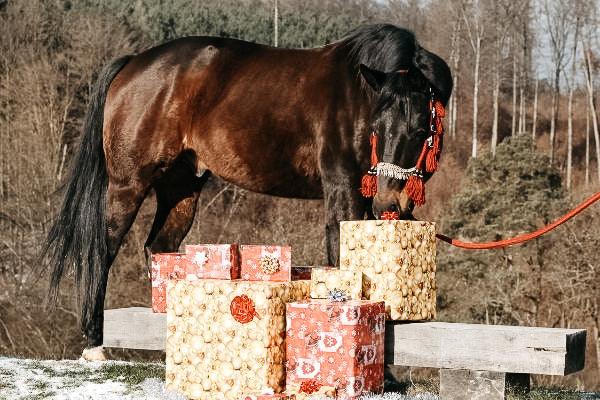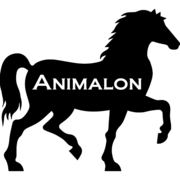
Suitability of horses
Dressage horse, western horse or more of a leisure horse? Which horse is suitable for which division of equestrianism?
Not all horses are the same. There are also some differences in the suitability of horses. Some horses are specialists in the dressage arena, others feel really comfortable riding cross-country in nature and others are excellent jumpers and complete a complete course. But how do you know what a horse is suitable for?
The requirement as to what type of riding the horse is suitable for first of all determines the breed. The breed provides important information about the horse's temperament and physique. These two factors are important clues to determine the suitability of the horse. Of course, genetics and ancestry also play a significant role. If ancestors were successful in a field of equestrianism in the past, it is obvious that the younger generations will follow in these “footsteps”.

What types of riding are there?
1. Dressage
In dressage riding, the horse's natural abilities are promoted and refined through gymnastic exercises. The aim of dressage is to have a rideable horse that responds to minimal assistance from the rider and can thus be induced to carry out a desired lesson precisely. The dressage training of the horse forms the basis for almost all equestrian disciplines. Dressage is also one of the most successful disciplines of all.
The so-called training scale is crucial for the training of all horses in dressage. This scale was established by the German Equestrian Association (FN) and includes the following points:

- Bar
- Let go
- Leaning
- Swing
- Straight direction
- Gathering
2. Jump
Show jumping is an equestrian discipline in which horse and rider have to ride through a course in a specific order and in a limited time. The course consists of several different obstacles that have to be overcome one after the other. The obstacles can be steep jumps, high long jumps or terrain obstacles (e.g. b Ditches, moats) act.
Show jumping also includes jumping gymnastics. This mainly involves cavallettis, small jumps and series of obstacles. The focus here is on gymnastics work, especially loosening and strengthening the hindquarters and back muscles. Jumping gymnastics is a very good preparation for jumping and helps build the trust of horse and rider.
Popular breeds for jumping include: b Trakehner, Hanoverian, Oldenburger and Holsteiner
3. Versatility
Eventing is a discipline that consists of several partial tests. The three partial exams include:
- Dressage
- Jump
- Off-road ride
The pair that collected the fewest penalty points in all three sub-disciplines won.
Most horse breeds and breeding lines are suitable for taking part in tests in the lower classes, provided they have an appropriate level of training and fitness. In the higher classes, warmbloods with a higher proportion of thoroughbreds and pure thoroughbreds are predominantly represented. A good eventing horse is characterized by its rideability and reliability. In addition, it must be e.g. b be able to concentrate in the dressage test and not be distracted. In order to master the cross-country course and the jumping course, an athletic physique and a high level of motivation are required. A long-range canter is also of great benefit, as the obstacles in the cross-country test can be a few hundred meters away.
Popular breeds for eventing include: b Württemberger, Hanoverian, Trakehne
4. Western
Western riding has its origins in America and is based on the riding style of North American cowboys. A cowboy's horse must know what it should do without constant influence from the rider, so that the cowboy can move from the saddle, for example. b can take care of the cattle. Western horses also have to be extremely agile and fast.
There are different disciplines in western riding. These include, for example: b
- Reining
- Cutting
- Trail
- Western Pleasure
- Working Cowhorse etc. v m
Popular breeds for Westerns include: b American Quarter Horse, American Paint Horse, Appaloosa
5. Trail riding/distance riding
Trail riding is a ride on horseback, usually lasting several days, over different terrain. The focus here is on experiencing nature, getting to know the landscape as well as the horse, with whom you spend the whole day hiking and on whose well-being the arrival at your destination depends crucially.
When trail riding, you spend the night in the open air, in tents or on horse farms that offer overnight accommodation for horses and riders. Luggage can be transported in large saddlebags, which are attached in front of and behind the saddle. There is also the option of bringing a pack horse with you, which only carries the luggage.
Trail riding requires a trained, obedient and roadworthy horse. Natural riding horse breeds, small horses and Arabians, but also warm-blooded horses and even mules are particularly suitable. What is particularly important for the hiking horse is sufficient back support and a stable foundation as well as healthy legs.
6. Leisure
Leisure horses are horses that are not used in tournament sports. Pleasure horses are often ridden off-road and are usually only used for the pleasure of handling the horse. However, a large number of riders also regularly do light exercises in the riding arena or on the arena without specifically training for tournaments. The focus here is on having fun riding.
In principle, any breed of horse is suitable as a leisure horse. It is often even seen that former competition horses are given away as leisure horses due to their age.
7. Breeding horse
If a horse is no longer rideable for health reasons, but even if it is healthy and has a promising pedigree, this horse is often used as a breeding horse (although this only applies to mares and stallions). Horse breeding refers to the well-thought-out and planned reproduction of horses with the aim of maintaining and/or improving health, performance and certain breed characteristics.
Since only animals that correspond as closely as possible to the breeding goal of the respective breed should be used as breeding horses, a selection must first be made. The selection criteria include:
- Ancestry
- Exterior/Interior
- Personal contribution
- Progeny Performance
- Health

Any breed of horse is suitable as a breeding horse. What is crucial is that you come as close as possible to the respective breeding goal.
Discover more posts
It's finally here - we're really excited to be exhibiting at the equestrian trade fair Horse & Hunting to be represented in Hanover! The Horse & Hunting is a trade fair highlight fo...
Continue reading
Is it that time again? Every year again... Time flies, December is already half over. Christmas is getting closer and closer and like every year you still don't know what to get you...
Continue reading
